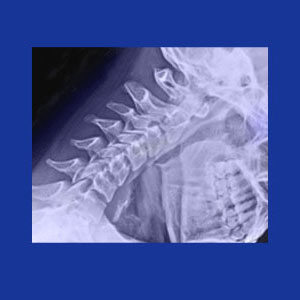
Rheumatoid arthritis in the neck is one of the more common locations to suffer serious symptoms stemming from this inflammatory arthritic variety. RA is a terrible disorder to suffer under and treatments range greatly in effectiveness from patient to patient. Worse still, doctors are truly guessing at why the disease even exists, making it that much harder to cure.
This essay centers on the causes, symptoms and treatments of rheumatoid arthritic growth in the cervical spinal region.
Causes of Rheumatoid Arthritis in the Neck
Doctors are not sure what exactly causes RA. There are many theories implicating various factors in the development of the disease, but not all are applicable to every patient. Some of these speculative contributory factors include:
Genetic predisposition seems to factor into many patient profiles. RA runs in the family and people who have a close relative with RA have a better chance of suffering from it themselves.
Females have a much higher rate of rheumatoid arthritis than males.
People with a history of other autoimmune disorders, such as gout, lupus and ankylosing spondylitis, have an increased chance of developing RA.
People with a history of possible mindbody pain syndromes, such as fibromyalgia, also have an increased risk to demonstrate a rheumatoid process.
Rheumatoid Arthritis Symptoms
In rheumatoid arthritis, the body turns on itself, damaging its own joint mechanisms and creating pain, disability and prolonged suffering. RA can create a variety of symptoms, with each patient having unique pain profiles and symptomatic locations. When RA exists in the neck, the following are the most commonly seen expressions:
Patients usually have localized or widespread pain in the neck, especially centered on the spine itself, as opposed to in the muscles. This pain is often much worse upon movement, either generally or in specific ranges of motion.
Stiffness in the cervical spinal joints is almost universal. Many patients also report a feeling of heat in the spinal joints.
Rheumatoid nodules may appear over the spine. Swelling may be visible or under the surface of the skin only. Patient may also have nodules elsewhere, such as in the lungs.
Spinal deformity is possible from severe cases and might influence front-to-back, or side-to-side, spinal curvature.
Patient is likely to have other areas of RA joint symptoms, as well. These may be spinal or nonspinal.
Patient will also demonstrate an increased risk for the following general or specific health issues: skin irritation locally, bone density concerns locally, malaise, chronic fatigue, anemia, kidney problems, as well as an increased risk for heart attack and stroke.
Treatment for Rheumatoid Arthritis in the Neck
Treatment for RA is typically handled by specialists called rheumatologists. These physicians deal almost exclusively in symptomatic care, mostly in the form of pills and injections, since no cure for RA is available.
Most RA sufferers are encouraged to undergo preventative and treatment-oriented physical therapy to maintain joint motion and general physical functionality. Some patients find relief from alternative and complementary healthcare methods, such as chiropractic, acupuncture, reiki, massage, heat, ice and meditation. A few patients have explored treating RA using purely mindbody methods, such as knowledge therapy, and many have enjoyed excellent results.
The usual therapy process for most patients is to take a toxic cocktail of drugs, including the dreaded DMARDS, which are known to have awful side effects which rival the arthritic process itself. In fact, a great number of patients eventually go on to suffer more serious and affective health crises as direct consequences of the pharmaceutical treatment of RA, rather than from the arthritic disorder.
Neck Pain>Arthritis Neck Pain>Rheumatoid Arthritis in the Neck





